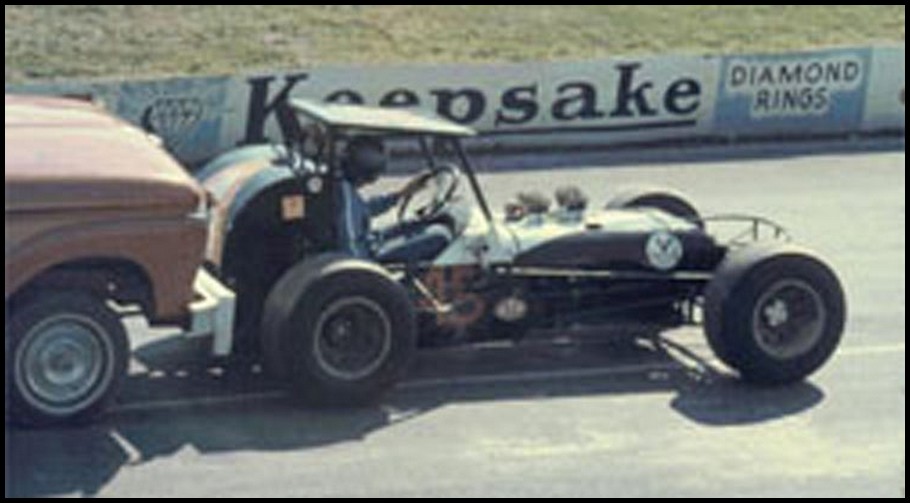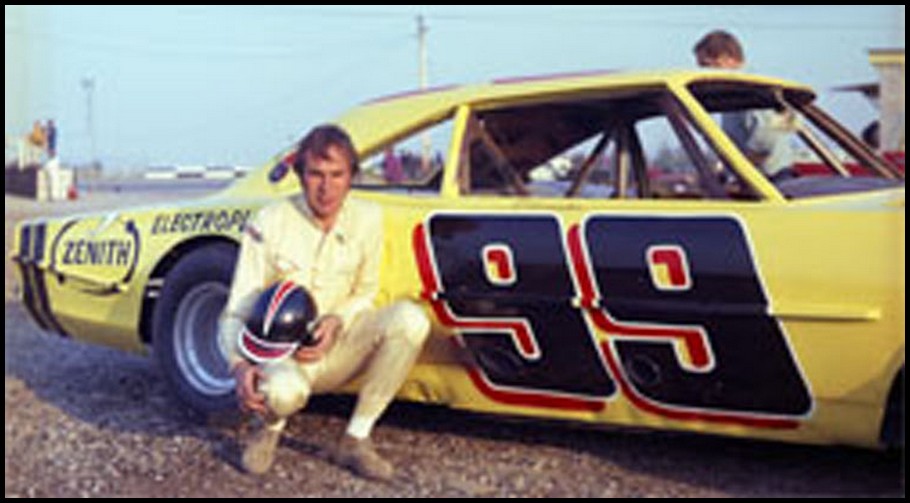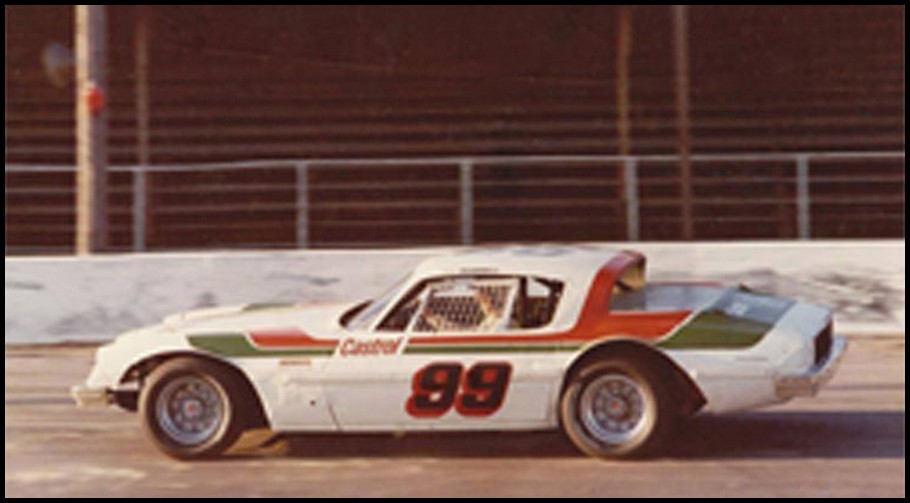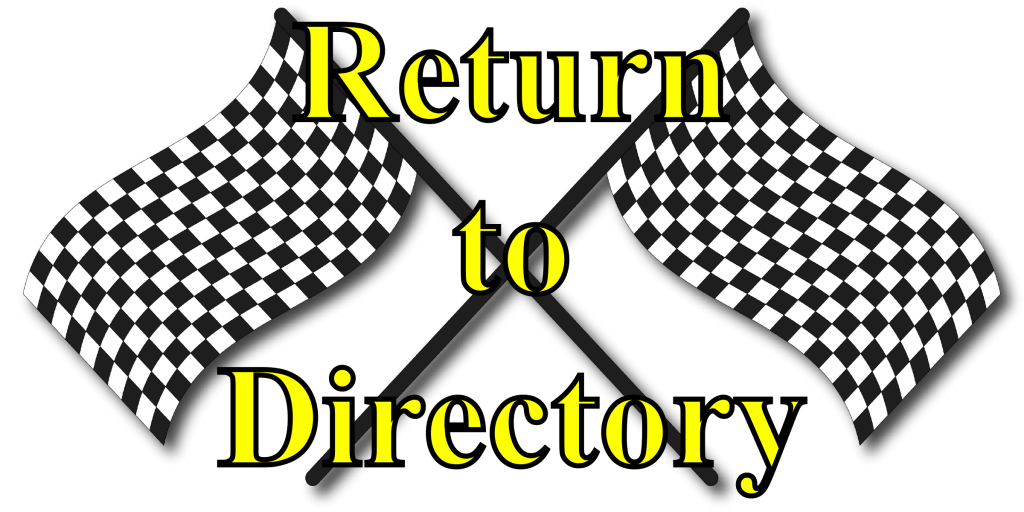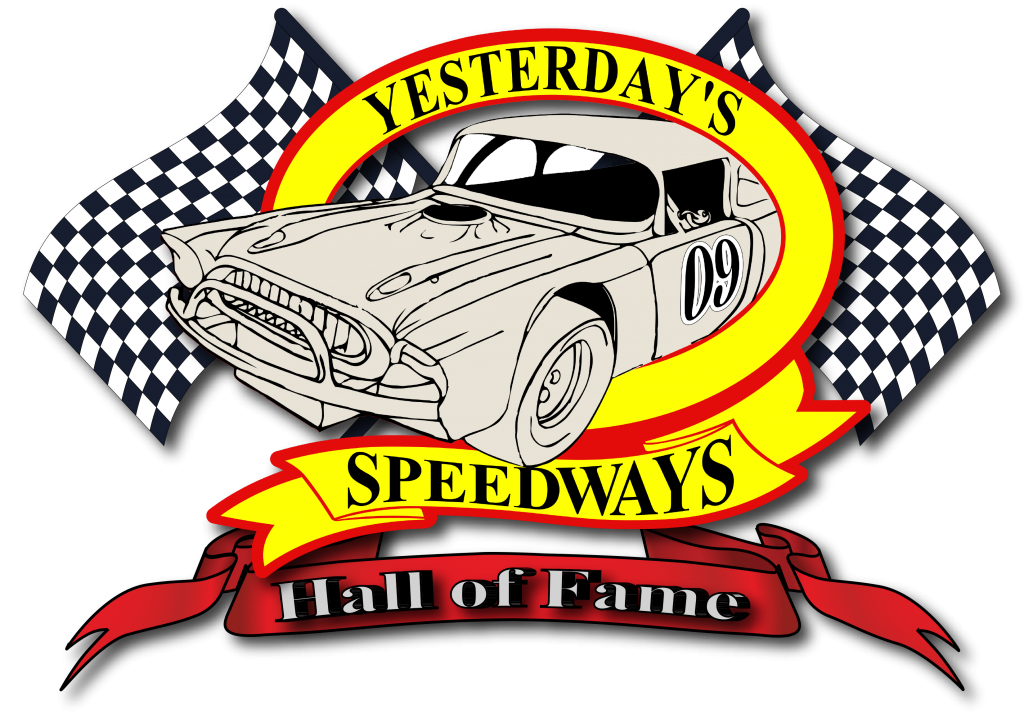
Howie Scannell
Howie Scannell started his racing career in a 1937 Chevy Coupe back in 1953.
His favorite driver at the time was Wallie Branston so he numbered his car #41 (Wallie’s #14 backwards). The first night out with his newly acquired car he was introduced to the very unforgiving walls at Pinecrest. His car was mangled pretty badly and he ended up with a broken nose.
Howie started racing the CNE stadium in 1954. He now had a 1934 Ford with a flathead power plant. This car was dubbed the “THUNDERBUG.” Howie changed his number to 42 for the 1954 season and kept this number for several years thereafter.
Yet another car was built for the 1955 season. This car had a tubular chassis and a 322 Buick power plant. Howie, Sid Hewiett and Jackie Rowe built this car. This was the car that people started to notice. Howie won a few heats and semis and was moved up to the 2nd heat from the slow car heat. The next few years were interesting but things really took a turn for the better in 1959
Joy Fair had been dominating everywhere he went over the past year so Howie went to Michigan to see about purchasing Joy’s car. It was agreed to, but he could not have it until the end of the season. The season ended and Howie made the trip back to Michigan to pick up the car that had been so dominant. This car came with a Dodge Red Ram Hemi Motor.
Just purchasing the yellow car from Joy Fair was the turning point I was referring to. Howie and his crew put the car in the shop and went over every nut and bolt. They knew this was a fast car but they were not familiar with this car so everything was checked over thoroughly.
Good Friday, 1960, for the first time in his career, Howie won the feature at the CNE in the car he bought from Joy Fair. The 1960 season was an improvement for Howie and the team. They were moved up into the fast car heat and finished in the top ten most race nights. Howie was now racing up front with the top drivers of the time at the Lakeshore oval.
Gord Wilkinson, a veteran car owner had Doug Callaghan in the driver’s seat back in 1960. Gord knew that the car was capable of much more than Doug was giving him so he approached Howie to drive his car during the 1961 season. Howie at the time was improving steadily but was not yet considered one of the top drivers but the 1961 season was about to change all that. On the track, this new team was unstoppable, off the track, there were personality conflicts between some of the team members and this new team was dissolved after the CNE closed in August of 1961.
Carl Rutledge, A former driver himself had been sponsoring cars for the last several years but that just wasn’t enough. Carl loved working on the cars and getting involved so he approached Gord Wilkinson about buying the car that Howie had raced earlier that year. Gord sold the car to Carl and to the shock of many fellow competitors, Howie was back in the drivers seat of the car he raced so well in.
This Rutledge Rocket ran very competitively in 1962 with Howie at the wheel until tragedy struck. Howie, Arnold Van Hees and Jackie Rowe were driving to Oswego for the International Classic in a brand new Chevy pick up when the right rear tire blew. Howie dislocated his shoulder, Arnold broke his neck and Jackie had minor injuries but the truck and race car were beyond repair.
The loss of the car that had been so competitive did not even fizzle this team. Carl went down to the United States and purchased an old Indy Roadster from Tony Bettenhausen to race during the 1963 season. They brought the car home, shortened it up a bit, dropped in a Pontiac power plant and went racing. The first night was a little scary but once they got this new race car sorted out it was fast. The Rutledge Rocket took its fair share of wins during the 1963 season with Howie in the drivers seat.
It was announced by Jack Higgins toward the end of the 1963 season that the Super Modifieds would not be returning to the CNE in 1964. The powers that be at the CNE Stadium have decided to run a Late Model program instead of the Supers. The drivers at the time now had to find other tracks to race on or change over to Late Models, “TAXI CABS” as the Super Modified drivers call them. Most drivers left, but a few switched to the Late Models. Among them was one Jack Cook, Jack went on to win the 1964, 1965 and 1966 Track Championships for the Late Model division at the CNE.
In preparation for the 1964 season Howie teamed up with Norm Morton. Norm was a welder and a former driver himself. This proved to be another winning combination as they took their fair share of wins in their first season together as a team, 1964. It was also in 1964 that Howie was first approached about driving a Late Model. Bernie Rededick had built a 1956 Pontiac Late Model and sold it to Jim Hutchinson. Jim, with a lot of persuasion and arm twisting talked Howie into the drivers seat of this 1956 Pontiac at the CNE.
Bernie Reddick is a local businessman and a former driver himself. He purchased his first Super Modified from Norm Lelliot in 1960. After Bernie saw the results Howie had in his first ever Late Model race driving for Jim Hutchinson, Bernie knew he needed Howie sitting in his car. Bernie approached Howie and asked him if he would drive his (Bernie’s) car in 1965. After much consideration Howie agreed and switched to the Late Models in 1965. This was the start of a multi season team. Howie raced for Bernie from 1965 through 1973.
All of Bernie’s cars that Howie raced were either Dodge or Plymouth. The first car Howie drove for Bernie was a 1963 Plymouth Coach with a Chrysler “B” power plant. They ran well with this car but wanted more of an edge so the car was sold to Bill Passer. At this point a 1968 Dodge Coronet still with the unibody frame was built. Bernie had made the decision to drive this car himself but thought twice once it got closer to the time. Once again Howie drove the car to many victories.
At first, this car was all power with a 426 Hemi purchased from James Hylton from Nascar but it couldn’t get around the corner. Earl Ross, one of the top contenders at the time made a wisecrack about bringing a dragster to an oval. In the end it was Howie and Bernie that had the last laugh winning 11 out of 22 features at Flamboro during that season. Bernie and Howie rented the track at Flamboro for a day and took everything with them, they had to make this car get through the corners better and that they did. Once this car was hooked up it was a nightmare for Earl Ross and the rest of the competition.
In preparation for the next season Bernie and Howie built a proper full chassis Dodge Dart with an even stronger Hemi engine. The car looked beautiful but it was a weapon to try and drive. It was replaced early in the season with another Dodge Coronet with a longer wheel base and the Hemi from the Dart. With this car Howie took the 1969 and 1971 Late Model Championship at Flamboro.
Bernie prepared a 1972 Plymouth for the 1972 season. Once again the Plymouth was powered by the 426 Hemi. This car had some success but nowhere near the success that they were used to with the Coronet. The 1972 Plymouth became the Pinecrest car for the 1973 season and Bernie built a brand new 1973 Dodge Charger for Cayuga, Delaware and Flamboro. Once again, the Charger was very competitive but it wasn’t dominant like the Coronet was.
Pinecrest used to run a longer season than most tracks, they would start earlier and run later into the fall. After the other tracks finished their seasons Bernie brought both his cars to Pinecrest. Howie Scannell drove the Kleen Flo car and Vic Parsons drove the easily renumbered #98.
“I can remember one night at Pinecrest, (keep in mind I was 10 years old at the time), Howie got turned around at Pinecrest and backed the Charger into the wall right at the pit entrance. A fire erupted and my father, Fred Sharples, picked up one of the barrels at the Pit entrance that had water in them and doused the fire. I know those barrels were not full but from a 10 year old kids perspective, that was pretty cool.”
Rick Sharples
Howie agreed to drive for Ken Stewart in 1974. Ken built a beautiful Ford Mustang for the 1974 season. This car had the best of everything. Ken was a perfectionist. The car had to be right. Unfortunately the car just didn’t perform as expected. At the end of the 1974 season, Ken and Howie parted ways.
In preparation for the 1975 season Howie purchased an Ed Howe chassis. My father, Fred Sharples built this car in our garage in Maple. I was just a kid at the time but I remember the day Howie brought this frame to our house. Dad worked on this car all winter long, (my brother Ray and I helped where we could but we were 9 and 11 at the time. We didn’t do much on this car. Ray got more involved in helping Dad with cars as he got older). When the car left our garage it was Howie’s Castrol Camaro that he drove in 1975.
Howie raced this car again in 1976 sponsored by Dan’s Auto Body. I am not exactly sure when he retired as a driver. Howie stopped racing his own car in the late 1970s, possibly the early 1980s but he continued racing in special events only for other owners for several years. The last race I know of was in 1997, I believe he showed up at the track and his car that he was supposed to drive was sold a few hours earlier.

